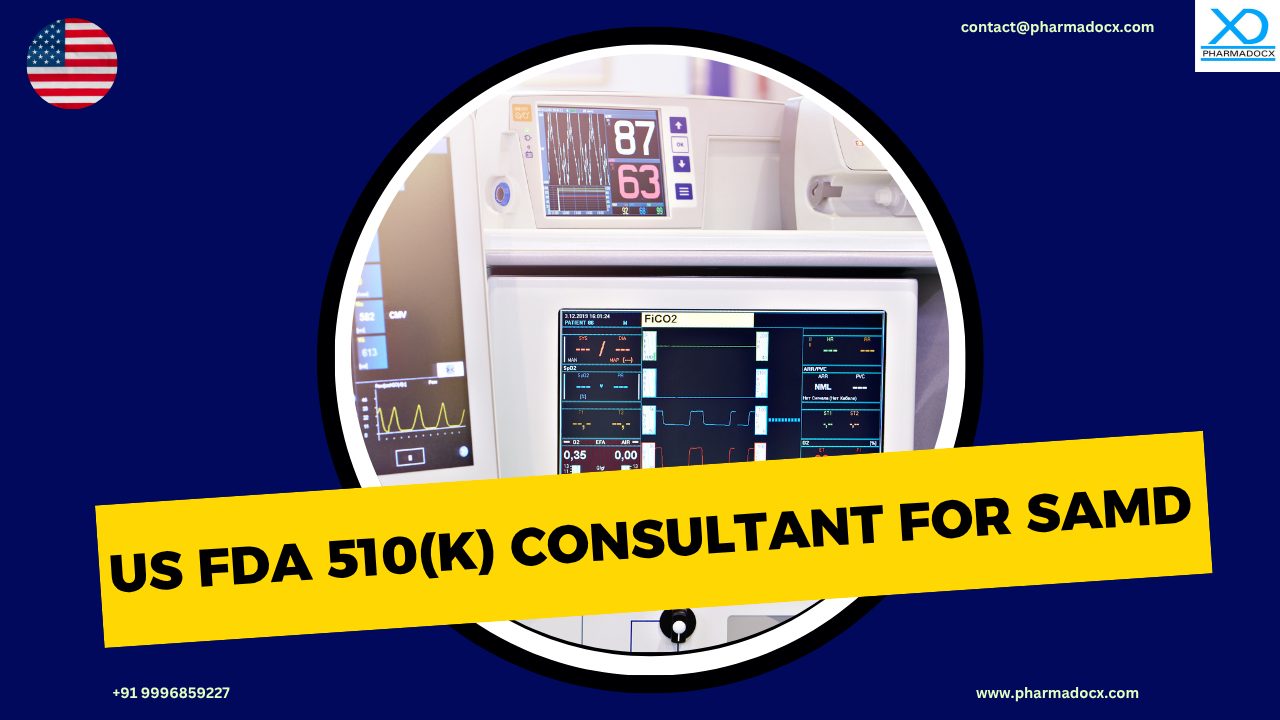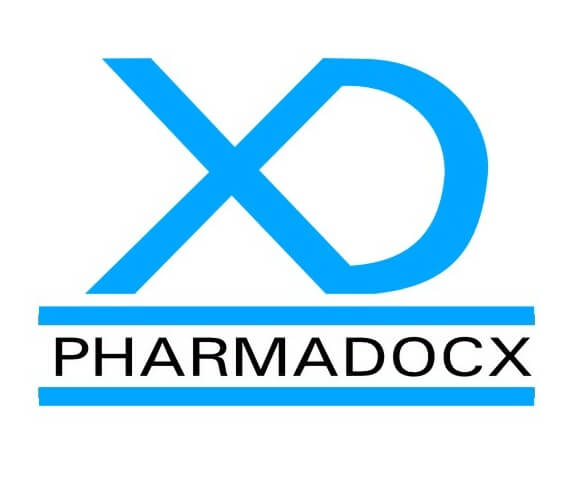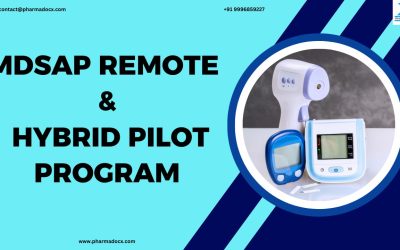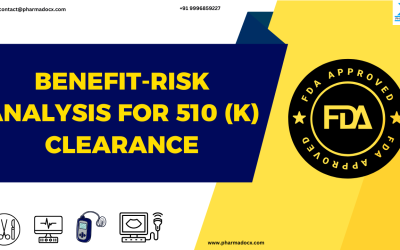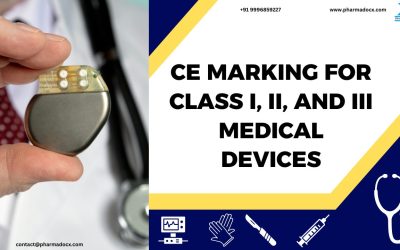Similar to other medical devices, SaMDs will also have to comply with US FDA regulations to be launched in US. Navigating the US FDA regulations for SaMDs can be a daunting task. Hiring an US FDA 510(k) consultant for SaMD can streamline the application process.
What is SaMD?
Software as a Medical Device (SaMD) refers to standalone software intended for medical purposes, such as diagnostic, therapeutic, or monitoring. SaMDs are usually not part of a hardware medical device. Examples of SaMDs are:
- Clinical Decision Support Systems (CDSS)
- Radiology Information Systems (RIS)
- Electronic Prescription Systems (EP)
- Laboratory Information Systems (LIS)
What is the role of US FDA 510(k) consultant for SaMD?
We have outlined the role of an US FDA 510(k) consultant for SaMD.
- Assess predicate equivalence
- Prepare documentation (device description, labeling, software architecture, risk analysis, testing data)
- Facilitate FDA communication
- Guide risk management and cybersecurity documentation
US FDA 510(k) submission for SaMD: 5 phases
- Preparation: Defining intended use of the SaMD and identifying product code. Provide appropriate indications for use of the software device in compliance to the intended use. Prepare detailed device description with features, architecture, functions. Selecting a suitable predicate device for the device in question. In the 510(k) summary, provide details regarding the manufacturer, such as name, address, contact person at the company, contact number, any claims. Perform level of concern evaluation.
- Software documentation: The documentation required will depend on the level of concern. The comprehensive documentation should include user manual and promotional material as well as software architecture (modules, data flow, and external interactions). Additionally, it should include functional specifications, safety requirements, and traceability. Moreover, verification and validation testing requirements should be provided. Furthermore, the risk management file should include threat modeling, hazard analysis, cybersecurity. Additionally, the documentation should cover revision history and unresolved anomalies, hardware requirements, and compliance certificates.
- Substantial equivalence demonstration: Fill in the FDA Form 3514. Prepare a comparative study between the proposed device and predicate device. Prepare an executive summary highlighting the similarity and justify any differences between the proposed device and predicate device.
- Administrative documentation: Prepare the administrative documentation with cover letter, truthful and accuracy statement, and declarations of conformity.
- Final submission: Create an RTA checklist template based on type of submission. Fill the checklist and ensure all mentioned documents to be submitted to the FDA are available. Prepare an e-copy and submit to the US agent.
Focus on cybersecurity: A specific requirement of SaMD
US FDA 510(k) consultant for SaMD must focus on cybersecurity, as it is a specific requirement for SaMDs. In the application submission, FDA expects threat modelling, risk mitigation strategies, and documentation of protections against unauthorized access and data breaches.
Why should you hire an US FDA 510(k) consultant for SaMD?
US FDA 510(k) consultant for SaMD bridge the gap between software developers and FDA expectations. They help navigate the FDA regulatory requirements. Moreover, their role covers strategic planning, technical documentation, risk management, and regulatory communication.
- Strategic guidance and process acceleration: The main goal of an US FDA 510(k) consultant for SaMD is to streamline the 510(k) submission process to achieve faster FDA clearance. They provide end-to-end support from initial device classification to final e-copy submission. With their support, you can have accelerated time-to-market and ensure audit readiness of your files.
- Substantial equivalence assessment: The consultant will determine if the new SaMD is substantially equivalent to a predicate device. Intended use, technological characteristics, state-of-the-art features, and performance data are compared between the two devices. Product claims are aligned with regulatory benchmarks. The main aim is to build a defensible case for equivalence, which is the cornerstone for smooth 510(k) clearance.
- 510(k) documentation preparation: US FDA 510(k) has extensive documentation requirements. Consultants will prepare and organize all required documentation, as per regulatory requirements. They will tailor the submission per your requirements and regulatory requirements for your device. Additionally, they will help prepare the labels per regulatory requirements.
- Gap analysis and troubleshooting ideas: Identify deficiencies in documentation, testing, or risk controls. Recommend corrective actions to align with FDA standards and best practices. With the support of consultants, you can avoid RTA rejections and reduce review cycles.
- Risk management support: The US FDA 510(k) consultant for SaMD will identify potential hazards and assess risk severity and probability. Their analysis will be based on international standards and global quality benchmarks. Then, they will propose and document risk controls. They will help embed risk intelligence into the QMS, thereby ensure long-term compliance and resilience. Moreover, the consultant will prepare risk management files, traceability matrix, and cybersecurity threat model.
- FDA communication facilitation: The consultant will act as a liaison between the developer and FDA during the review process. They will respond to FDA inquiries, submit additional information or clarifications, and update the 510(k) file as needed.
- US agent representation: For non-US based companies, consultants can act as US agents. They will officially interact with FDA, handle correspondence and regulatory updates, and ensure compliance with FDA communication protocols.
5 Common pitfalls that lead to SaMD US FDA 510(k) rejections
- Weak risk management documentation
- Inadequate software validation
- Poor predicate comparison
- Disorganized submission
- Missing cybersecurity elements
We are a renowned US FDA 510(k) consultant for SaMD. With out support, US FDA 510(k) submission process will be a cake walk. Our team will assess substantial equivalence, prepare compliant documentation, and ensure alignment of your SaMD with FDA standards. Additionally, we will facilitate risk management, address submission gaps, and act as a liaison with the FDA to expedite clearance. Drop an email at [email protected] or call/Whatsapp on 9996859227 to get in touch with our team of experts.
Common FAQ every US FDA 510(k) consultant for SaMD is asked
What are the key components of a 510(k) submission for a SaMD?
The key components in a 510(k) submission for a SaMD are as follows device description, including software architecture and functionality. Additionally, it includes substantial equivalence comparison to a predicate device. Risk analysis and mitigation strategies are mentioned. Labeling and user instructions have to be provided per guidelines. Software verification and validation testing results have to be provided.
What is substantial equivalence?
Substantial equivalence can be defined as demonstrating the proposed device has the same intended use and technological characteristics as that of a predicate device. Any differences that may exist in terms of architecture, software functionality, and performance should not raise new questions about safety and effectiveness.
What is required in the SaMD documentation for a 510(k)?
Software documentation typically includes:
- Software description
- Software requirements specification (SRS)
- Architecture design chart
- Software development environment description
- Risk management file
- Traceability matrix (linking requirements, risks, and test results)
- Verification and validation documents
List some common reasons for SaMD FDA 510(k) rejection
Common reasons of SaMD FDA 510(k) application rejections are as follows:
- Failure to clearly demonstrate substantial equivalence.
- Inadequate risk management documentation.
- Poorly organized submission documents.
- Missing or incomplete cybersecurity considerations.
- Insufficient software validation and verification testing.
What is the role of cybersecurity in a SaMD 510(k) submission?
Cybersecurity is a critical aspect of the SaMD 510(k) submission. It is vital for ensuring the safety and effectiveness of a SaMD. The FDA requires documentation of cybersecurity measures, including threat modeling, risk assessment, and mitigation strategies. Software developers are required to demonstrate that the software is designed to protect against data breaches, unauthorized access, and other security threats. Hence, cybersecurity forms a core aspect of the SaMD 510(k) submission.
How to handle software modifications in an FDA 510(k) submission?
Any modifications to the software after the initial 510(k) clearance have to be carefully assessed to determine whether a new 510(k) application is required. This is done by checking whether the changes will impact the device’s intended use, performance, functionality and safety. If the changes are significant, a new 510(k) application will be necessary.

